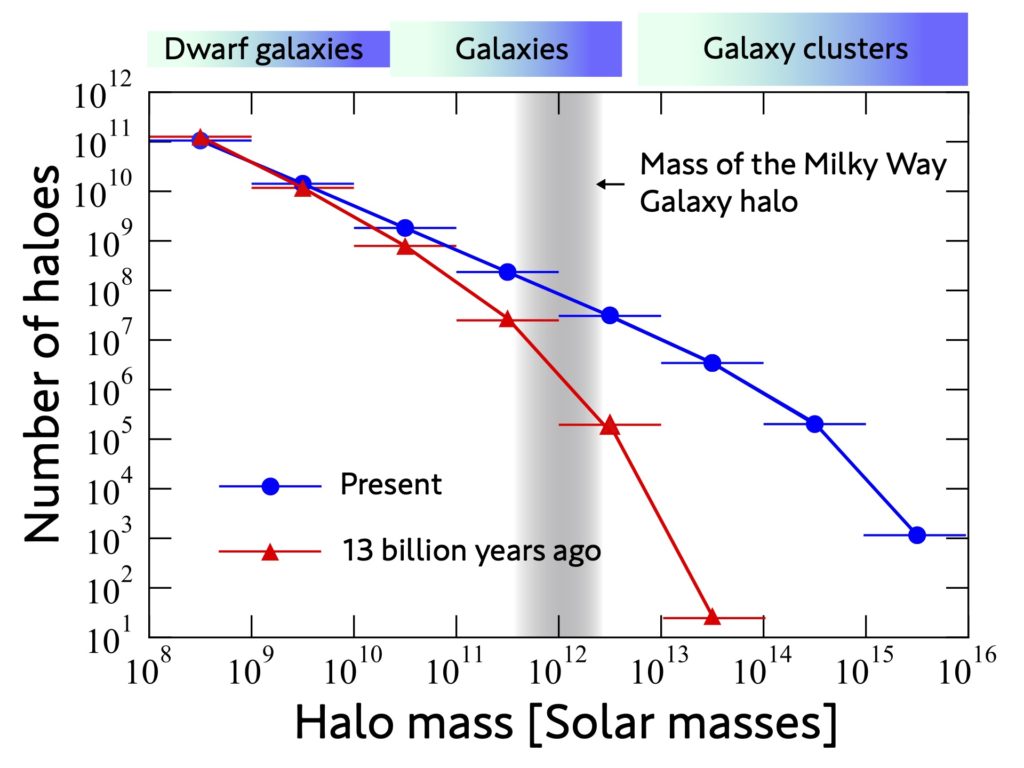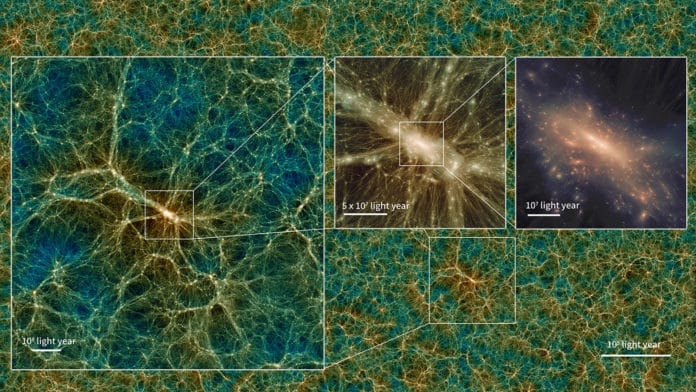An international team of researchers has generated an entire virtual universe. It is the most extensive and most detailed simulation of the Universe ever made. Dubbed the Uchuu simulation, it has 2.1 trillion ‘particles’ in space 9.6 billion light-years across.
The simulation is freely available on the cloud n an easy-to-use format. For this, the credit goes to the computational infrastructure skun6 located at the Instituto de Astrofísica de Andalucía (IAA-CSIC), the RedIRIS group, and the Galician Supercomputing Center (CESGA).
The meaning of Uchuu is Outer space in Japanese. It reveals the evolution of the Universe on a level of both size and detail inconceivable until now.
The simulation mainly focuses on the large-scale structure of the Universe, like Mysterious halos of dark matter. The details it offers are high enough that scientists can identify everything from galaxy clusters to the dark matter halos of individual galaxies.
Unlike any other virtual world, the Uchuu simulates the evolution of matter over almost the entire 13.8 billion year history of the Universe from the Big Bang to the present. That is over 30 times longer than the time since animal life first crawled out of the seas on Earth.

The Uchuu was created using ATERUI II, the world’s most powerful supercomputer dedicated to astronomy. Despite having such a powerful supercomputer, scientists took a year to produce Uchuu.
Tomoaki Ishiyama, an associate professor at Chiba University who developed the code used to generate Uchuu, explains, “To produce Uchuu, we have used all 40,200 processors (CPU cores) available exclusively for 48 hours each month. Twenty million supercomputer hours were consumed, and 3 Petabytes of data were generated, the equivalent of 894,784,853 pictures from a 12-megapixel cell phone.”
The simulation produces more than 3 Petabytes of data- that’s 3,000 TB or 3 million GB. Scientists used high-performance computational techniques to compress the information on the formation and evolution of dark matter haloes in the Uchuu simulation into a 100-terabyte catalog.
Julia F. Ereza, a Ph.D. student at IAA-CSIC who uses Uchuu to study the large-scale structure of the Universe, explains, “Uchuu is like a time machine: we can go forward, backward and stop in time, we can zoom in on a single galaxy or zoom out to visualize a whole cluster, we can see what is happening at every instant and in every place of the universe from its earliest days to the present, being an essential tool to study the cosmos.”
The simulation is expected to help astronomers interpret Big Data galaxy surveys expected in coming years from facilities like the Subaru Telescope and the ESA Euclid space mission.
Journal Reference:
- Tomoaki Ishiyama et al., The Uchuu simulations: Data Release 1 and dark matter halo concentrations, Monthly Notices of the Royal Astronomical Society (2021). DOI: 10.1093/mnras/stab1755
